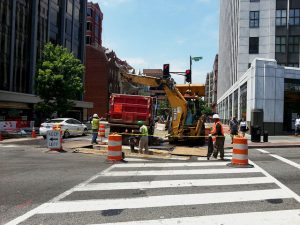 Getting a traffic ticket is something most people are desperate to avoid. The only problem is that many people tend to drive in a way that actually increases their chances of being ticketed instead of adopting defensive driving tactics designed to decrease the chances of a ticket or getting into an accident. Of course, even defensive driving is not always enough, which is why it’s essential that drivers understand how to properly anticipate, identify and avoid road hazards to further reduce their chances of getting a ticket.
Getting a traffic ticket is something most people are desperate to avoid. The only problem is that many people tend to drive in a way that actually increases their chances of being ticketed instead of adopting defensive driving tactics designed to decrease the chances of a ticket or getting into an accident. Of course, even defensive driving is not always enough, which is why it’s essential that drivers understand how to properly anticipate, identify and avoid road hazards to further reduce their chances of getting a ticket.
Potential Road Hazards and How to Avoid Them
Weather
Weather is one of the biggest hazards that drivers can face, which is why it is important that drivers understand exactly what they should and shouldn’t do whenever faced with inclement weather conditions. For instance, you can still receive a ticket for driving at the speed limit if an officer determines that you were travelling too fast for the current conditions.
- If the road is wet or icy or there is low visibility, slowing down to a more manageable speed is one easy way to avoid tickets.
- Similarly, it is also a good idea to increase the distance between you and the vehicle in front of you to hopefully avoid being ticketed for following too closely.
- Another good option is to turn off your high beams (brights) when driving in the rain or snow as these will reflect the moisture in the air and limit your visibility and that of any other drivers around you.
Road Conditions
Rough or hazardous road conditions can also present challenges to drivers and increase their chances of getting into an accident or receiving a ticket.
- Potholes, bumps, loose gravel and other road hazards could potentially cause you to lose control of your vehicle, in which case you might receive a ticket.
- Similarly, an unmarked or soft shoulder could easily cause your vehicle to skid.
- Motorists are expected to drive in a way that allows them to easily identify and avoid potential hazards such as these, and if you don’t follow these rules, you might find yourself facing a hefty fine.
Steep, Winding Roads
Driving on exceptionally steep or winding roads also presents unique challenges, and drivers need to be aware of how to navigate these challenges and adjust their driving accordingly.
- Driving too fast can be especially problematic on winding roads, as you could easily end up losing control if you enter a corner too fast. In this case, braking before entering the curve can potentially help you avoid losing control.
- On steep roadways, drivers are also expected to signal their intent to pass much earlier.
- Passing or being passed can take much longer on steeper roads, so it’s always a good idea to play it safe and only pass when you are sure you have plenty of time and space.
Construction and Other Avoidable Hazards
Being alert about road construction and other hazards is one of the easiest ways to avoid getting ticketed.
- Police and highway patrol officers regularly patrol construction zones, and drivers need to take special care in these areas to ensure they drive safely and according to the law.
- Although you may not be able to prepare yourself for every potential hazard, checking the road conditions before setting off is one way to make sure you’re alert and prepared for the possible danger.
It is up to each driver to make sure that they follow the rules of the road. However, simply following the speed limit and other basic rules isn’t always enough to help you avoid a ticket. For this reason, it is always a good idea to pay close attention whenever you are behind the wheel so that you can identify and avoid potential road hazards.
[Image:https://www.flickr.com/photos/branderguard/14356903398/]
Scott Desind
Latest posts by Scott Desind (see all)
- How to Request the County Seat and Fight Your California Traffic Ticket - May 21, 2023
- Don’t Even Touch That Cell Phone - July 13, 2022
- Innocent Until Proven Guilty - March 2, 2020

